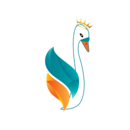Building an Academic Writing Culture As a Medium to Improve Students’ Self-Efficacy
Abstract
Purpose of the study: This study aims to analyze the relationship between academic writing culture and students' self-efficacy. Academic writing is a crucial skill in higher education, yet many students struggle to develop effective writing habits. Low interest, lack of academic support, and limited foundational writing skills are key factors affecting the students' self-efficacy in performing academic tasks.
Methodology: This study employed a quantitative approach with a correlational method. A purposive sampling technique was used to select 26 students who were actively engaged in academic writing. Data were collected through a Likert-scale closed questionnaire and analyzed using the Pearson product-moment correlation to determine the strength and direction of the relationship between academic writing culture and self-efficacy.
Main Findings: The results indicate a very strong relationship between academic writing culture and students' self-efficacy, with a correlation coefficient (r) of 0.994. The coefficient of determination (R²) of 98.8% demonstrates that academic writing culture makes a significant contribution to improving students' self-efficacy, while other factors influence 1.2%. This finding suggests that fostering a strong academic writing culture enhances students' confidence in facing academic challenges.
Novelty/Originality of this Study: This study provides novel insights by highlighting the essential role of academic writing culture as a dominant factor influencing students' self-efficacy. While previous research has examined writing difficulties and self-efficacy separately, this study establishes a direct and strong correlation between them. The findings underscore the importance of institutional support in promoting academic writing habits that boost students' confidence and academic success.
References
A. Faujianor, S. H. Ningsih, N. Safitri, and A. Aziz, “Pengembangan media pembelajaran bagan dan audio berbasis multimodal solusi mengatasi kendala keterbatasan teknologi pembelajaran [Development of multimodal-based chart and audio learning media, a solution to overcome the constraints of limited learning technology.],” JUPERAN J. Pendidik. dan Pembelajaran, vol. 03, no. 02, 2024, doi: https://ojs.smkmerahputih.com/index.php/juperan/article/view/528.
A. Andini and A. Fadly, “Meningkatkan keterampilan menulis pada pembelajaran bahasa indonesia kelas VIII 2 SMP Muhammadiyah 22 Pamulang melalui pendekatan pembelajaran berbasis proyek [Improving writing skills in Indonesian language learning for class VIII 2 of Muhammadiyah 22 Pamulang Middle School through a project-based learning approach],” in Seminar Nasional dan Publikasi Ilmiah 2024 FIP UMJ, 2024, pp. 1835–1844.
A. Safitri, S. H. Ningsih, and S. Surawan, “Identity crisis and religious conversion: The religious dynamics of modern society,” Journal of Islamic Education and Ethics, vol. 3, no. 1, pp. 89–101, 2025, doi: 10.18196/jiee.v3i1.79 Identity.
R. Sriyanti, N. Hidayat, and R. Marlia, “Penalaran deduktif, induktif dan bahasa dalam penulisan ilmiah [Deductive, inductive reasoning and language in scientific writing],” J. Rev. Pendidik. dan Pengajaran, vol. 7, no. 4, pp. 16818–16824, 2024, doi: 10.31004/jrpp.v7i4.38312.
A. E. Setyawan, A. Anyan, and L. Anggera, “Upaya meningkatkan keterampilan mahasiswa dalam menulis karya ilmiah berbantuan AI (Artificial Intelligence) [Efforts to improve students' skills in writing scientific papers assisted by AI (Artificial Intelligence)],” J. Pengabdi. Masy. Khatulistiwa, vol. 7, no. 1, pp. 24–43, 2024, doi: 10.31932/jpmk.v7i1.3278.
A. Lestari, A. Ajahari, and S. Surawan, “Self happines sebagai media menanggulangi self harm: Studi kasus mahasiswa FTIK IAIN Palangka Raya [Self-happiness as a medium to overcome self-harm: Case study of FTIK students of IAIN Palangka Raya]”, IRJE, vol. 4, no. 4, pp. 3281, 2024. doi: 10.31004/irje.v4i4.1385.
H. Yuliani and M. R. Kumalasari, “Pendampingan penulisan dan publikasi artikel untuk mahasiswa tadris (pendidikan) fisika di IAIN Palangka Raya [Assistance in writing and publishing articles for physics education students at IAIN Palangka Raya],” Dedik. J. Community Engagem. Empower, vol. 1, no. 2, pp. 1–23, 2023.
C. W. Anggraeni, J. Mujiyanto, K. Rustipa, and W. Widhiyanto, “Problematika dan solusi dalam penulisan akademik pada mata kuliah professional writing: Persepsi mahasiswa [Problems and solutions in academic writing in professional writing courses: Student perceptions],” in Prosiding Seminar Nasional Pascasarjana (PROSNAMPAS), 2022, pp. 208–214. [Online]. Available: https://proceeding.unnes.ac.id/index.php/snpasca/article/view/1452
H. Q. M. Asaad and A. A. Shabdin, “The predictive role of morphological awareness and productive vocabulary knowledge in L2 postgraduate students’ academic writing,” Eurasian J. Appl. Linguist., vol. 7, no. 1, pp. 24–44, 2021, doi: 10.32601/ejal.911149.
A. Ulfah, “Problematika penulisan karya ilmiah mahasiswa [Problems of writing scientific papers by students],” MEDIA Didakt., vol. 10, no. 2, pp. 1–9, 2024, doi: 10.52166/didaktika.v10i2.8045.
I. R. Armania, H. Hamdanah, and A. Abdullah, “Dampak self efikasi mahasiswa aktivis terhadap achievement academic [The impact of student activist self-efficacy on academic achievement],” JIIP (Jurnal Ilm. Ilmu Pendidikan), vol. 8, no. 2, pp. 1824–1829, 2025, doi: 10.54371/jiip.v8i2.6986.
A. Bandura, Self Efficasy The Exercise of Control. New York: W.H. Froeman and Company, 1997.
V. Safitri and A. F. Prabawa, “Kajian Literatur: Self-Confidence, Self-Concept dan Sikap Tafa’ul [Literature Review: Self-Confidence, Self-Concept and Tafa'ul Attitude],” Soc. Humanit. Educ. Stud. Conf. Ser., vol. 7, no. 3, pp. 1924–1935, 2024, doi: 10.20961/shes.v7i3.92348.
S. Sarifah, H. Hamdanah, and S. Surawan, “Self-Efficacy : In-Depth study of pai students’ teaching readiness through teaching practices 1 (microteaching),” Ideguru J. Karya Ilm. Guru, vol. 10, no. 1, pp. 593–599, 2025, doi: 10.51169/ideguru.v10i1.1525.
A. D. Wijaya, “Dampak rendahnya self efficacy pada mahasiswa tingkat akhir: Sebuah studi literatur [The impact of low self-efficacy on final year students: A literature study],” JUBIKOPS J. Bimbing. Konseling dan Psikol., vol. 4, no. 2, pp. 115–126, 2024, doi: 10.56185/jubikops.v4i2.768.
H. Hasmatang, “Pentingnya self efficacy pada diri peserta didik [The importance of self-efficacy in students],” in Prosiding Seminar Nasional Biologi VI, 2019, pp. 296–298.
K. Abdullah et al., Metodologi Penelitian Kuantitatif. 2022.
R. Pratama, S. A. Aisyah, A. M. Putra, R. A. Sirodj, and M. W. Afgan, “Correlational research,” JIIP - J. Ilm. Ilmu Pendidik., vol. 6, no. 3, pp. 1754–1759, 2023, doi: 10.54371/jiip.v6i3.1420.
D. A. Setyawan, Statistika Kesehatan Analisis Bivariat Hipotesis Penelitian, vol. 1. Penerbit Tahta Media Group, 2022.
F. Riskia and D. K. Dewi, “Hubungan antara dukungan sosial dengan self efficacy pada mahasiswa fakultas ilmu pendidkan universitas negeri surabaya angkatan tahun 2015 [The relationship between social support and self-efficacy in students of the Faculty of Education, Surabaya State University, class of 2015],” Character J. Psikolog Pendidikan., vol. 4, no. 1, pp. 1–7, 2017, doi: 10.26740/cjpp.v4i1.18989.
A. Manik, D. P. Thesia, and E. P. B. Tarigan, “Kajian penulisan teks akademik bagi mahasiswa terhadap peningkatan keterampilan menulis [Study of academic text writing for students to improve writing skills],” Bhinneka J. Bintang Pendidik. dan Bhs., vol. 2, no. 3, pp. 115–122, 2024, doi: 10.59024/bhinneka.v2i3.845.
K. K. H. Darmayanti, E. Anggraini, E. Y. Winata, and M. F. F. Mardianto, “Confirmatory factor analysis of the academic self-efficacy scale: An indonesian version,” J. Pengukuran Psikol. dan Pendidik. Indones., vol. 10, no. 2, pp. 118–132, 2021, doi: 10.15408/jp3i.v10i2.19777.
R. Rahmiati, “Analisis kendala internal mahasiswa dalam menulis karya ilmiah [Analysis of internal obstacles for students in writing scientific papers],” Al Daulah J. Huk. Pidana dan Ketatanegaraan, vol. 3, no. 2, p. 329, 2014, doi: 10.24252/ad.v4i2.1486.
Z. Fang, Demystifying Academic Writing Genres, Moves, Skills, and Strategies. Routledge, 2021.
M. D. R, N. I. Alfaien, A. Ramadhani, I. Yasmina, and S. Salsabila, “Pengalaman bimbingan tugas akhir, perspektfi mahasiswa [Final project guidance experience, student perspective],” J. Rev. Pendidik. dan Pengajaran, vol. 6, no. 2, pp. 483–489, 2023, doi: 10.31004/jrpp.v6i2.18233.
S. B. Seto, M. T. S. Wondo, and M. F. Mei, “Hubungan motivasi terhadap tingkat stress mahasiswa dalam menulis tugas akhir (skripsi) [The relationship between motivation and students' stress levels in writing their final assignments (thesis)],” J. Basicedu, vol. 4, no. 3, pp. 733–739, 2020, doi: 10.31004/basicedu.v4i3.431.
S. Bell, “Project-Based learning for the 21st century: Skills for the future,” Clear. House A J. Educ. Strateg. Issues Ideas, vol. 83, no. 2, pp. 39–43, 2010, doi: 10.1080/00098650903505415.
A. Khosa, C. Wilkin, and S. Burch, “PhD students’ relatedness, motivation, and well-being with multiple supervisors,” Account. Educ., vol. 33, no. 2, pp. 131–163, 2024, doi: 10.1080/09639284.2023.2179889.
D. H. Tong, B. P. Uyen, and L. K. Ngan, “The effectiveness of blended learning on students’ academic achievement, self-study skills and learning attitudes: A quasi-experiment study in teaching the conventions for coordinates in the plane,” Heliyon, vol. 8, no. 12, p. e12657, 2022, doi: 10.1016/j.heliyon.2022.e12657.
B. Karomah and R. M. Rukmana, “Pelatihan penulisan artikel ilmiah untuk meningkatkan profesionalisme mahasiswa dalam menyusun artikel ilmiah dan publikasi di jurnal nasional terakreditasi sinta,” J. Soc. Outreach, vol. 1, no. 2, pp. 1–9, 2022, doi: 10.15548/jso.v1i2.3914.
B. Witjaksana, M. Syafii, J. V. Litamahuputty, G. Al Haddar, and H. W. Heriyanto, “Penulisan artikel ilmiah terindeks sinta,” Communnity Dev. J., vol. 4, no. 5, pp. 9892–9897, 2023, doi: https://doi.org/10.31004/cdj.v4i5.21068.
D. Mustika, S. Q. Ain, and A. D. Iranti, “Pelatihan penyusunan artikel ilmiah bagi guru sekolah dasar di Kecamatan Marpoyan Damai Pekanbaru,” Rengganis J. Pengabdi. Masy., vol. 1, no. 1, pp. 42–47, 2021, doi: 10.29303/rengganis.v1i1.16.
P. Maria, E. Wahyuningrum, A. Angi, D. Winei, E. Jumrio, and E. S. Sawo, “Integration of Project-Based collaborative learning model to improve critical thinking and psikosocial skills of junior high school students,” Bull. Couns. Psychother. Integr., vol. 5, no. 3, pp. 331–339, 2023, doi: https://doi.org/10.51214/002024061142000.
E. Komara, B. Berliana, M. Firman, and U. Gunawan, “Implementation of Project-Based learning model to improve students’ critical thinking skills,” Econ. Educ. Anal. J., vol. 12, no. 3, pp. 192–198, 2023, doi: 10.15294/eeaj.v12i3.75919.
R. Susanto, A. Muktamar, K. F. Akbar, A. Ninasari, K. Suwarno, and A. Widarman, “Program pendampingan penelitian: meningkatkan kualitas penelitian dan publikasi di jurnal scopus melalui kolaborasi antara mahasiswa dan dosen [Research mentoring program: improving the quality of research and publication in Scopus journals through collaboration between students and lecturers.],” Communnity Dev. J., vol. 5, no. 6, pp. 12488–12491, 2024, doi: https://doi.org/10.31004/cdj.v5i6.40180.
M. A. Jamil, C. A. Malasari, Zulham, M. P. Marpaung, O. Tahalele, and Rukoyah, “Program pendampingan penelitian: Meningkatkan kualitas penelitian dan publikasi di jurnal scopus melalui kolaborasi antara mahasiswa dan dosen [Research mentoring program: Improving the quality of research and publication in Scopus journals through collaboration between students and lecturers],” Communnity Dev. J., vol. 5, no. 5, pp. 10629–10633, 2024, doi: 10.31004/cdj.v5i6.37091.
A. Habibi and K. Anwar, “Publikasi ilmiah bagi dosen dan mahasiswa: mungkinkah publikasi sambil kuliah? [Scientific publication for lecturers and students: is it possible to publish while studying?],” Pengabdi. Cendekia, vol. 1, no. 1, pp. 5–8, 2023, doi: 10.63107/648mpr17.
Copyright (c) 2025 Rahmadi Nirwanto

This work is licensed under a Creative Commons Attribution 4.0 International License.
Authors who publish with this journal agree to the following terms:
- Authors retain copyright and acknowledge that the Integrated Science Education Journal is the first publisher licensed under a Creative Commons Attribution 4.0 International License.
- Authors are able to enter into separate, additional contractual arrangements for the non-exclusive distribution of the journal's published version of the work (e.g., post it to an institutional repository or publish it in a book), with an acknowledgment of its initial publication in this journal.
- Authors are permitted and encouraged to post their work online (e.g., in institutional repositories or on their website) prior to and during the submission process, as it can lead to productive exchanges and earlier and greater citation of published work.








.png)
.png)





